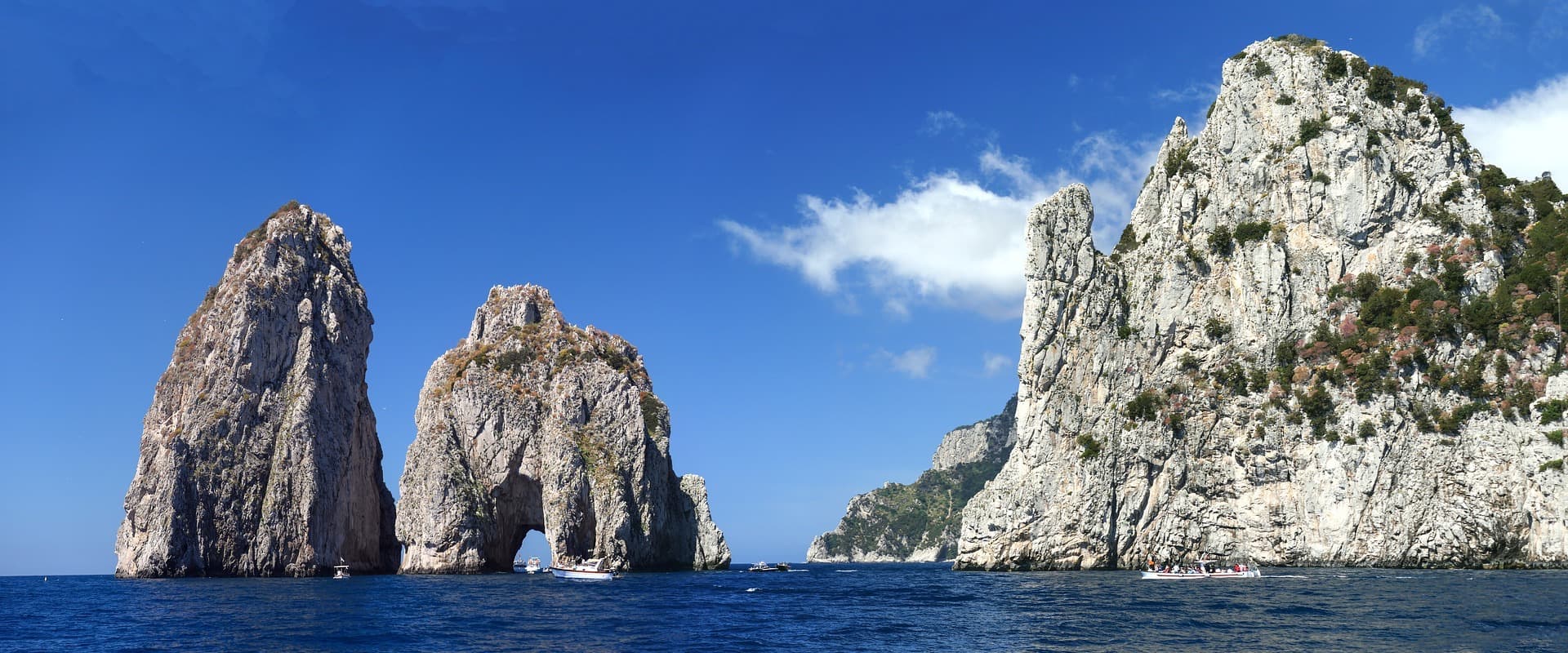Liveaboard Diving in Italy
Escape the crowds and dive the beautiful Mediterranean Sea
Liveaboard diving in Italy offers the opportunity to explore one of the most tranquil and beautiful regions in Europe. The waters around the Tuscan Archipelago are particularly famous for diving. The calm clear waters and rich marine life make this area very popular for liveaboards in Italy. In Italy liveaboards are often sailing boats which thanks to placid sea conditions and dramatic coastlines, mean visitors will enjoy a peaceful and stunning sail.
The best islands for diving in this region are protected by the Tuscan Archipelago National Park. This area is home to some of the richest marine life on the Italian coast. Divers can see shoals of amberjacks, sardines as well as various critters such as octopus, lobsters and nudibranchs. Not only is the marine life excellent but the island of Elba, one of the crowning jewels of the archipelago, hosts its very own underwater museum of mythological statues.
There are also numerous reefs home to huge fields of sea fans and lots of colourful reef fish. If you enjoy wreck diving the Elviscott sits around 14 meters deep off the coast of Elba island. Dive cruises around the Tuscan islands have something to draw divers whatever their interests in addition to warm, still waters with fantastic visibility. Most liveaboard boats in Italy are sailing ships with cosy bunk cabins and traditional style lounge dining areas. They normally take around 6 or more guests on board and offer excellent freshly cooked food. These comfortable boats are the perfect way to enjoy a peaceful and comfortable trip around the islands of Italy. The itineraries are normally a seven day liveaboard tour around the Tuscan archipelago giving you access to all the hidden treasures this region has to offer.
Elba island is one of the most popular areas to visit not only for the spectacular diving but the opportunity to visit some of the unique nature spots on the island itself. A liveaboard dive trip also enjoys access to the more remote dive sites around the archipelago, the Mediterranean Sea is full of hidden coves and tiny islets for divers to enjoy. Most dive cruises offer 2 dives per day and the option of a night dive as well.
Dive Sites and Areas of Italy
The Tuscan archipelago is home to beautiful waters protected by the national park, so there is a bounty of excellent dive sites to be found here. Elba island is home to a large number of the most famous sites, including the underwater museum which can be found a few hundred meters off the coast in the Corsican Canal. The museum is actually more of an underwater art collection with statues depicting various historical and mythological scenes. For those who love underwater art you can also do a dive tour of the Punta della Madonna where a beautiful statue of the Madonna praying sits just off the coast of the island.
Wreck lovers will enjoy the Elviscott dive site which sits in shallow water near the village of Pomonte on the south west coast of Elba. The merchant ship was sunk during a storm and sits on her side on the sandy bottom. The wreck is a haven for fish life with shoals of bream, sardines and moray eels making it their home.
Those who enjoy nature will be amazed by Formiche della Zanca where huge numbers of red sea fans can be found, often providing a home for small critters like nudibranchs and sea horses. Pianosa Island is also rich with marine life with barracuda, moray eels and even eagle rays found on the four main sites on the island.
When to go
Scuba diving in Italy is good all year around with fish life and excellent visibility whenever you decide to visit. There is a difference in temperature between the summer months and the winter both in the water and on land. In the summer the water temperature reaches 27-28 C and above the water it can climb to 35 C or more. From the Autumn until the Spring the water drops down to around 13-17 C in the water so be sure to bring the right suit.
The warmer months are the best time to see the most critters around the Italian coast but are also the most popular and therefore the busiest period. In the winter you might well enjoy have many of the dive sites just for yourselves.
Tips for Travellers
Italy is a very well developed European county but the islands tend to have less facilities and a more relaxed atmosphere so you may not find spares and other items you want to purchase there. The currency is the Euro and exchanges and banks can be found easily. The language of the country is Italian but most people speak English and Spanish as well.
How to Get There and Port of Departure
It is possible to fly to Elba Island from various points of departure including Milan and Lugano in Italy. Flights are also available from numerous German airports including Dusseldorf, Berlin, Hamburg and Dresden. If you prefer to come by ferry, most depart from Piombino which is a few hours by car or train from both Pisa and Florence international airports. The ferries arrive in Portoferraio or Porto Rio, the main departure points for most diving liveaboards in Italy.
Considerations
A dive cruise is one of the best value options for diving in Italy with cruises costing around 150-200 Euros a night with option of paying a little extra for full board for your trip. The national park in this area does not charge divers a fee for visiting the dive sites around the archipelago. Visitors from non EU countries will need a stamp on their passport upon entry but there should normally be no charge for stays of up to 90 days in Italy. The diving in Italy is fairly easy and open for almost all levels of divers with Open Water level or equivalent suitable for most dive sites.
Liveaboards in Italy offer peace and tranquillity in the Mediterranean. Excellent visibility and calm waters make for stunning, relaxing diving. Elba island hosts an underwater museum, Punta della Madonna boasts the iconic praying statue and the Elviscott site is named after the ship wreck there.











